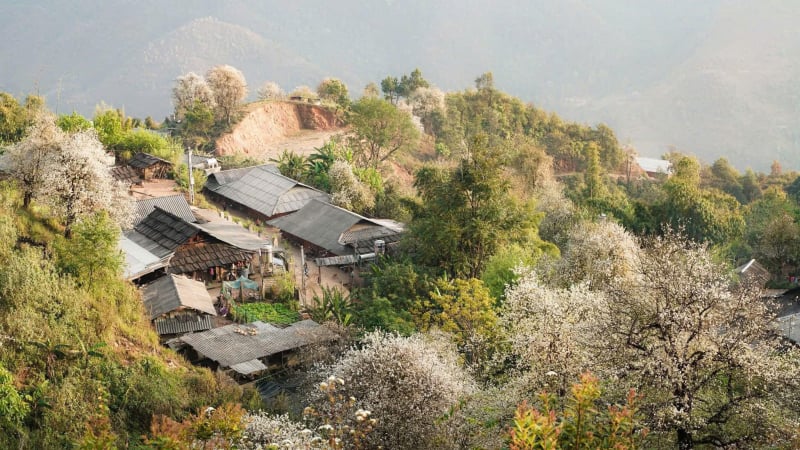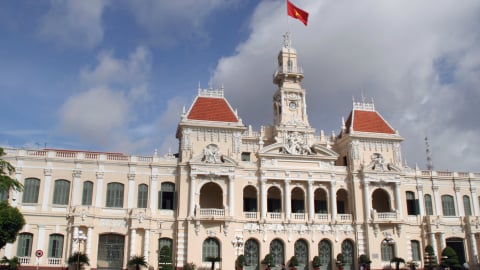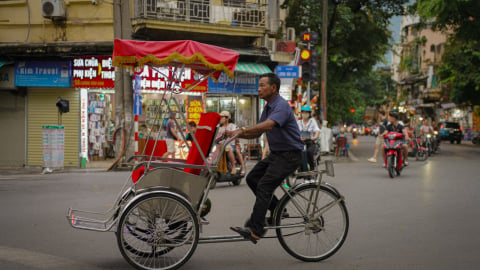After nearly three years of suspension to overcome the severe consequences of natural disasters, Son Tra Peninsula - the "green lung" of Da Nang, has officially reopened its tourist routes from September 16, 2025. This event not only marks the great efforts of the local government in restoring tourism infrastructure, but also opens up opportunities for tourists to rediscover the wild beauty of the primeval forest and admire the rare red-shanked douc langur.
Son Tra Peninsula, with an area of over 4,400 hectares and an altitude of nearly 700 meters, is considered a green gem of Da Nang, where the forest ecosystem is closely linked to the sea, creating a unique beauty. However, at the end of 2022, storm Son Ca caused unprecedented landslides, cutting off many main roads leading to the forest. The landslides forced authorities to temporarily close many roads to ensure the safety of tourists.

Da Nang reopens tourist routes on Son Tra peninsula
Over the past three years, the government and relevant agencies have made every effort to repair and reinforce the slopes and roads. All efforts are aimed at reopening the area to serve the needs of tourists for sightseeing and exploration.
From September 16, 2025, the Management Board of Son Tra Peninsula and Da Nang tourist beaches announced the reopening of three main routes: Tien Sa - Suoi Om - Dinh Ban Co, Dinh Ban Co - Bai Bac, and Nga Ba Bai Bac - Cay Da heritage. These are important routes, connecting attractive destinations on the peninsula, thereby helping visitors easily access and experience the beauty of the wild nature here.
To ensure the safety of visitors and protect the forest ecosystem, the Management Board has issued strict regulations on visiting time and form. Specifically, during the rainy season (from October to February of the following year), visiting time is from 7:30 to 17:30. During the dry season (from March to the end of September), the time will be longer, until 18:30. The authorities have the right to temporarily suspend activities if there is a warning of bad weather or other emergency situations.

The attractive beauty of the "green lung", many destinations attract visitors from all over the world
In addition, regulations on means of transport and forms of circulation are also strictly controlled. The Tien Sa - Suoi Om - Dinh Ban Co route, from Tien Sa guard station to Yet Kieu intersection, only allows sports bicycles, motorbikes (except scooters) and pedestrians. This not only helps to minimize risks but also creates conditions for tourists to enjoy fresh air and be closer to nature.
The Management Board also emphasized that visitors need to comply with general regulations such as only going on the right route, on time, not entering restricted areas or defense areas. Littering, deforestation or fire-making are also strictly prohibited. Flycam flying, filming and photography activities must have the consent of the authorities to avoid affecting the lives of wild animals.

Not only famous for its rich flora and fauna, including many rare species such as the brown-shanked douc langur or the red-faced chicken, Son Tra is also attractive for its unique spiritual stops.
One of the biggest problems in Son Tra Peninsula in recent years is the situation of tourists, especially young people, arbitrarily exploring dangerous areas such as Huc Lo, Mui Nghe, or Bai Da Den. These are places with complex terrain, there have been many cases of tourists getting lost and having to be rescued, or even having accidents. Therefore, to ensure absolute safety, the Management Board has absolutely banned spontaneous tourism activities in these areas.

On the mountainside, visitors can easily find cool streams like Da stream, or immerse themselves in the clear blue water at But beach, Rang beach, Bac beach, Om beach...
Strictly controlling spontaneous tourism activities is not only to protect the safety of tourists but also an important part of the work of conserving the forest ecosystem. Son Tra Peninsula is home to many rare species of flora and fauna, notably the red-shanked douc langur - an endemic primate, known as the "queen of primates." Restricting people from entering sensitive areas will help protect the natural habitat of this animal, avoiding negative impacts from humans.
With the reopening of the roads, Da Nang hopes to attract tourists to explore the wild beauty of Son Tra Peninsula, while raising people’s awareness of environmental protection and compliance with safety regulations. This event is not only good news for Da Nang’s tourism industry but also demonstrates the city’s commitment to developing sustainable tourism, in harmony between people and nature.



































